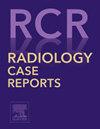Successful right transbrachial cerebral angiography in a patient with aberrant right subclavian artery: A technical note
Q4 Medicine
引用次数: 0
Abstract
Aberrant right subclavian artery (RSCA) is a congenital anomaly in which the RSCA arises as the final branch of the aortic arch, the presence of which makes cerebral angiography (CAG) via the right transbrachial approach (RTBA) difficult to perform. Herein, we present a case of aberrant RSCA in which the right transbrachial CAG was successfully executed and review its technical details in consideration of the anatomy of the aberrant RSCA. A 51-year-old man was admitted to our hospital with an unexplained subcortical hemorrhage in the left parietal lobe. Diagnostic CAG was performed via the RTBA, leading to the diagnosis of aberrant RSCA. Despite some technical difficulty, the Simmons curve was formed at an acute angle between the aberrant RSCA and the aortic arch. Once the Simmons curve is formed, torque control of the catheter can result in the bilateral common carotid artery (CCA) cannulation without switching to a transfemoral approach. Left CCA angiography confirmed an arteriovenous fistula in the distal left anterior cerebral artery. Subsequently, the suspected source of intracerebral bleeding and associated hematoma were surgically resected. Early detection of aberrant RSCA is crucial when using the RTBA. Depending on the procedure of catheterization, the right transbrachial CAG can be performed even in patients with aberrant RSCA; therefore, its continued usage seems worthy of consideration after setting a time limit.
求助全文
约1分钟内获得全文
求助全文
来源期刊

Radiology Case Reports
Medicine-Radiology, Nuclear Medicine and Imaging
CiteScore
1.10
自引率
0.00%
发文量
1074
审稿时长
30 days
期刊介绍:
The content of this journal is exclusively case reports that feature diagnostic imaging. Categories in which case reports can be placed include the musculoskeletal system, spine, central nervous system, head and neck, cardiovascular, chest, gastrointestinal, genitourinary, multisystem, pediatric, emergency, women''s imaging, oncologic, normal variants, medical devices, foreign bodies, interventional radiology, nuclear medicine, molecular imaging, ultrasonography, imaging artifacts, forensic, anthropological, and medical-legal. Articles must be well-documented and include a review of the appropriate literature.
 求助内容:
求助内容: 应助结果提醒方式:
应助结果提醒方式:


